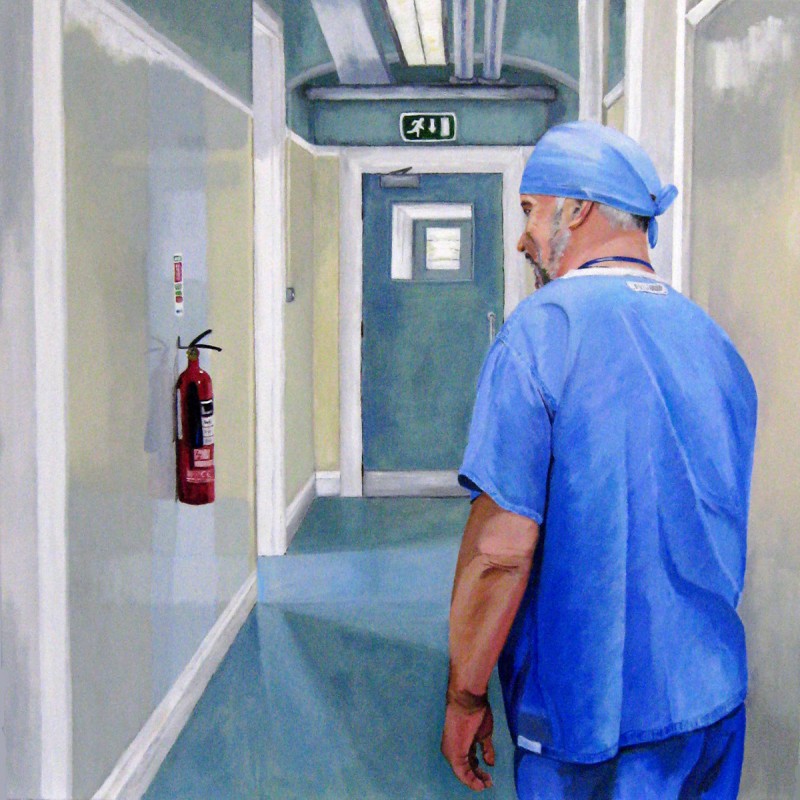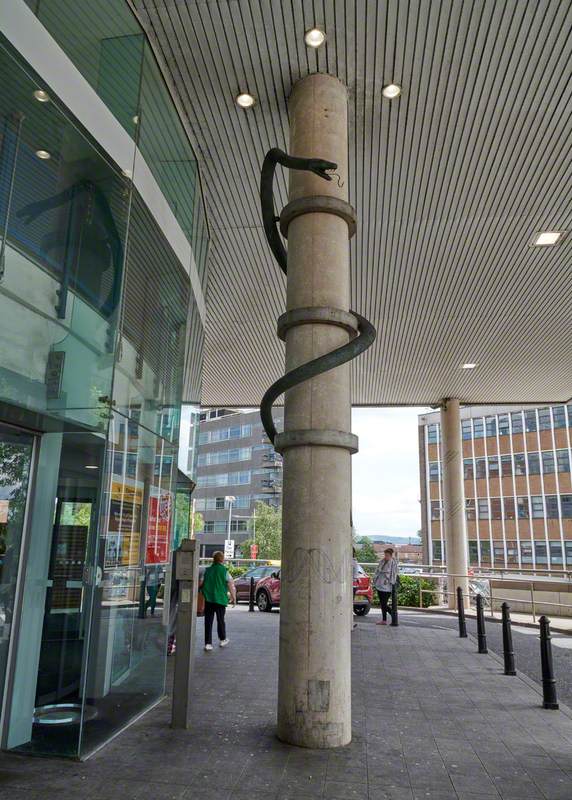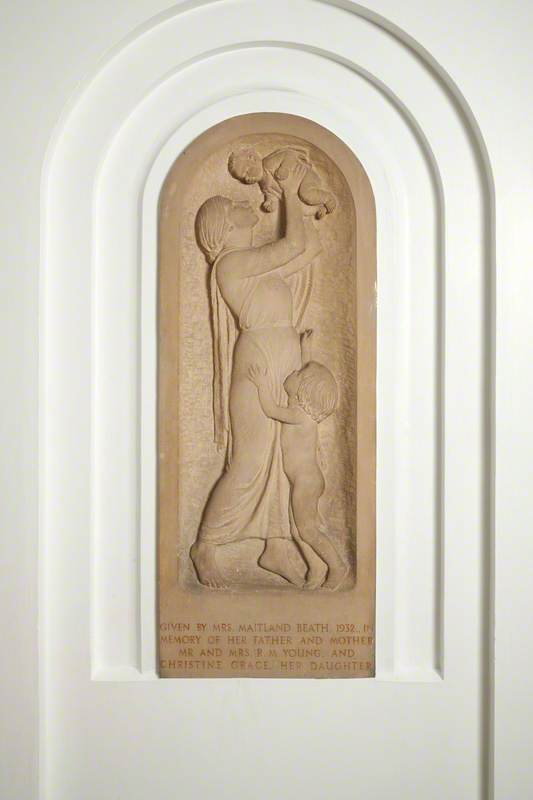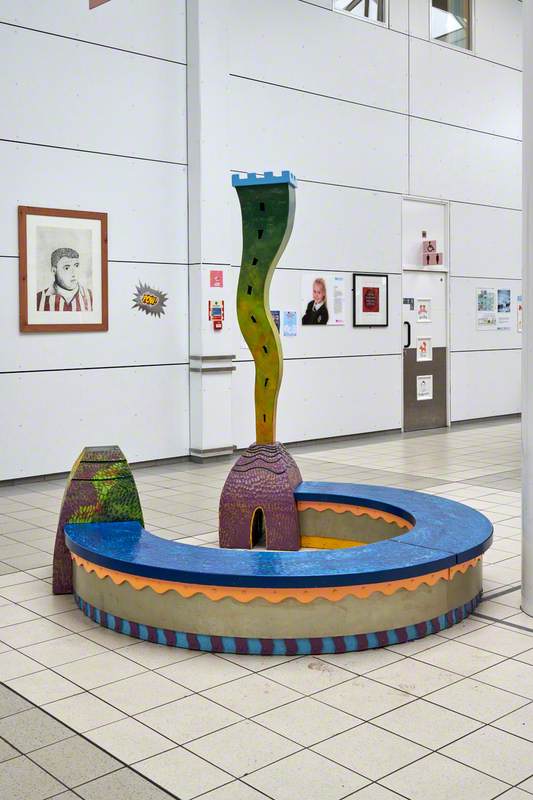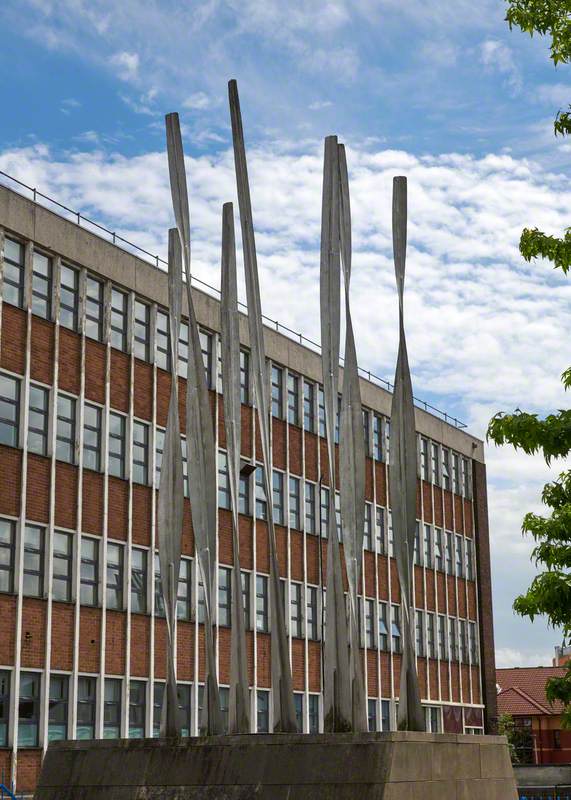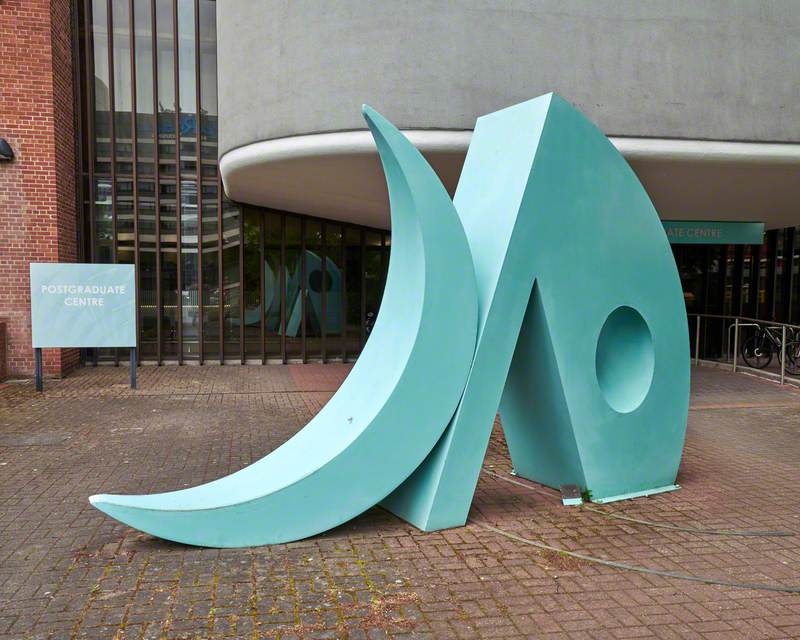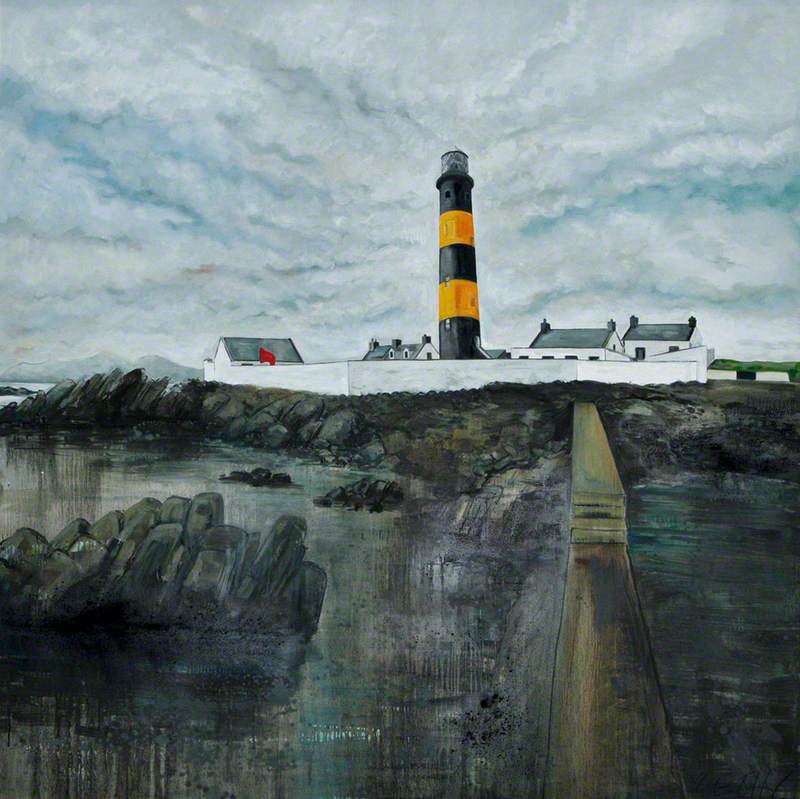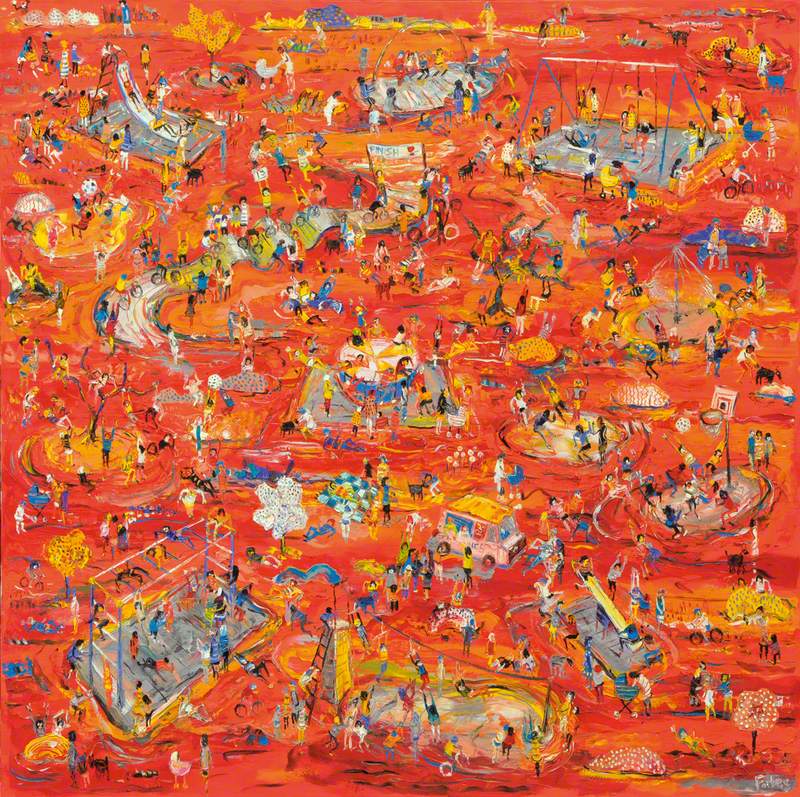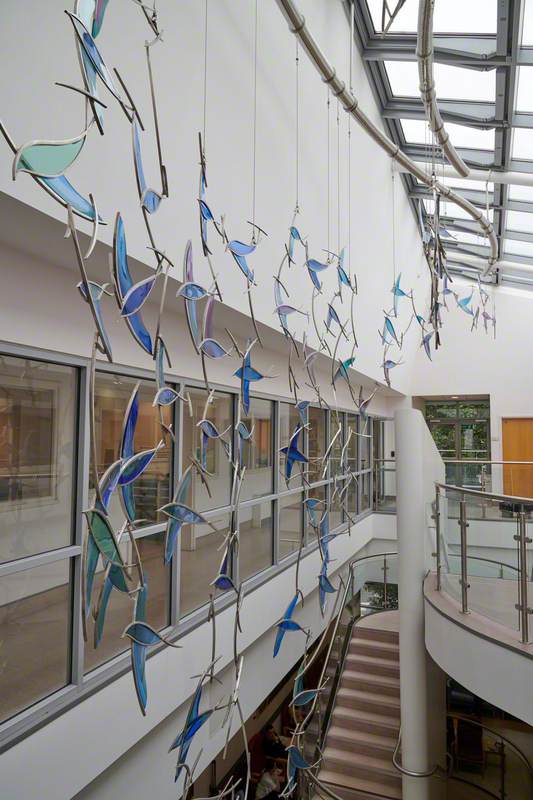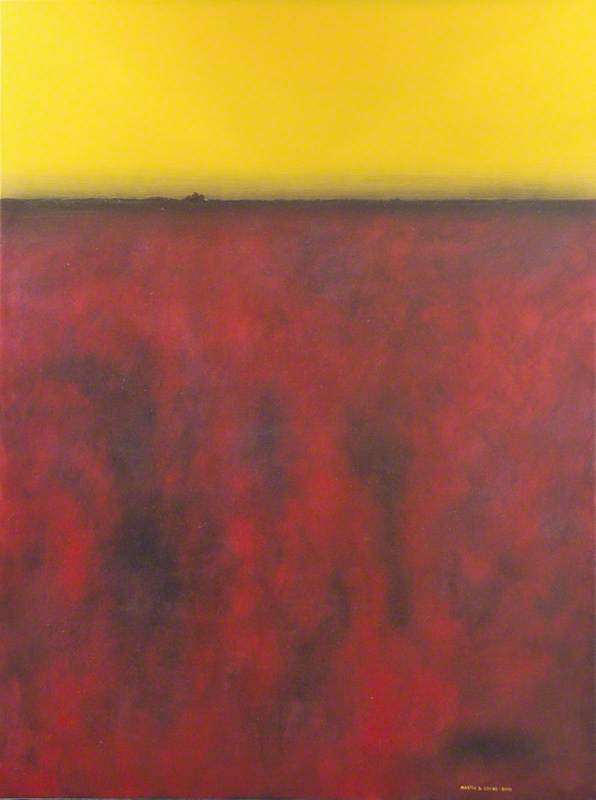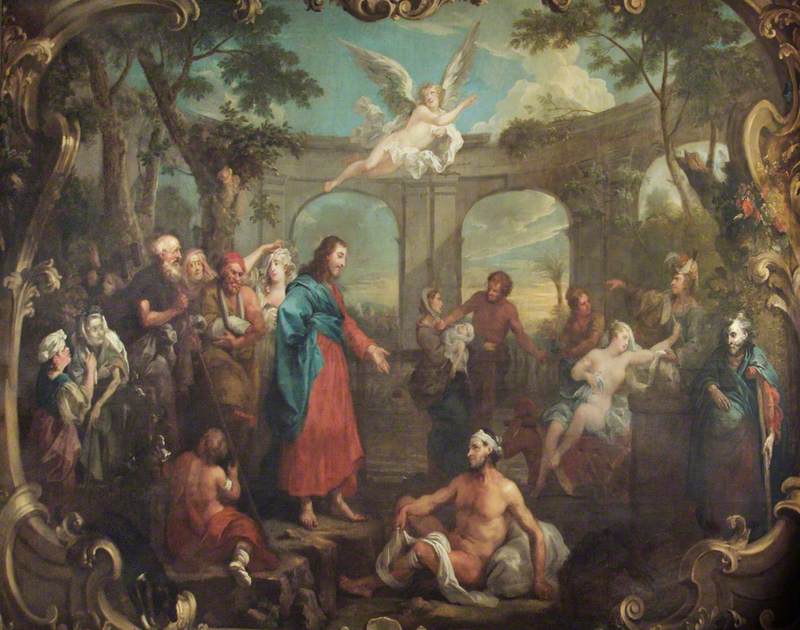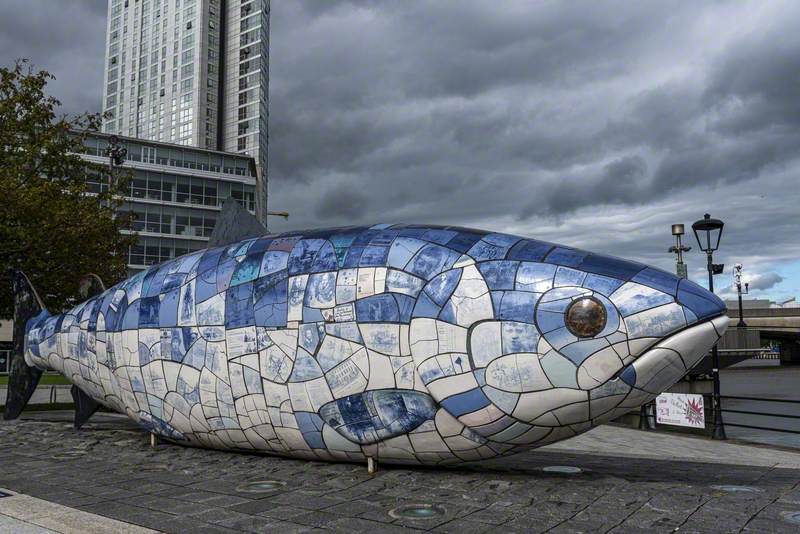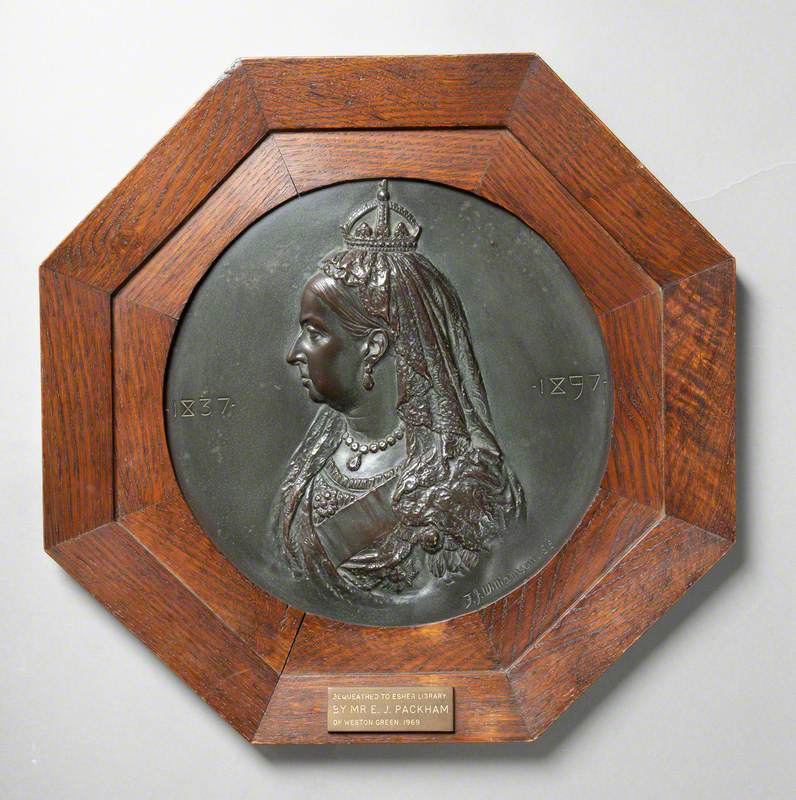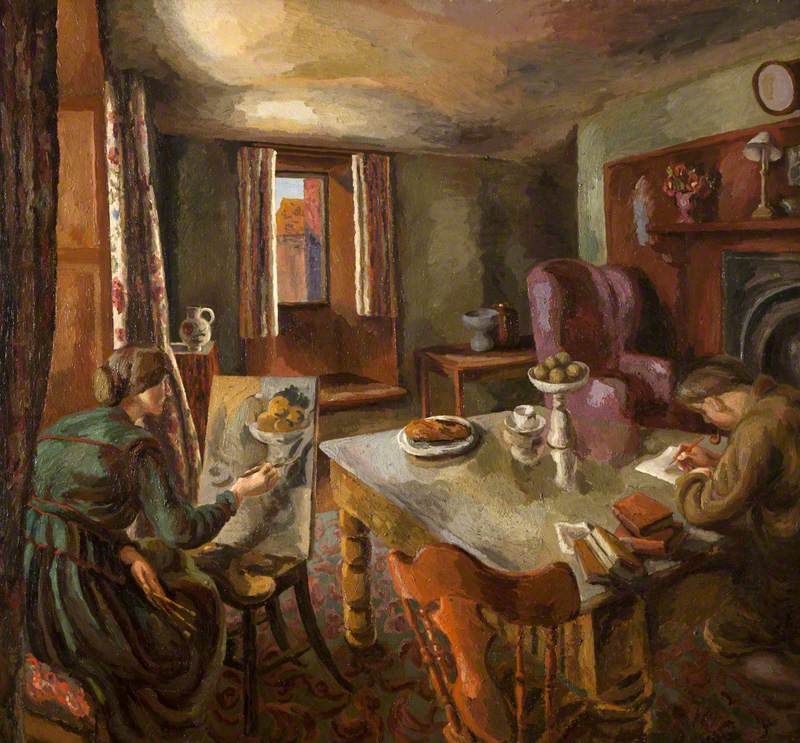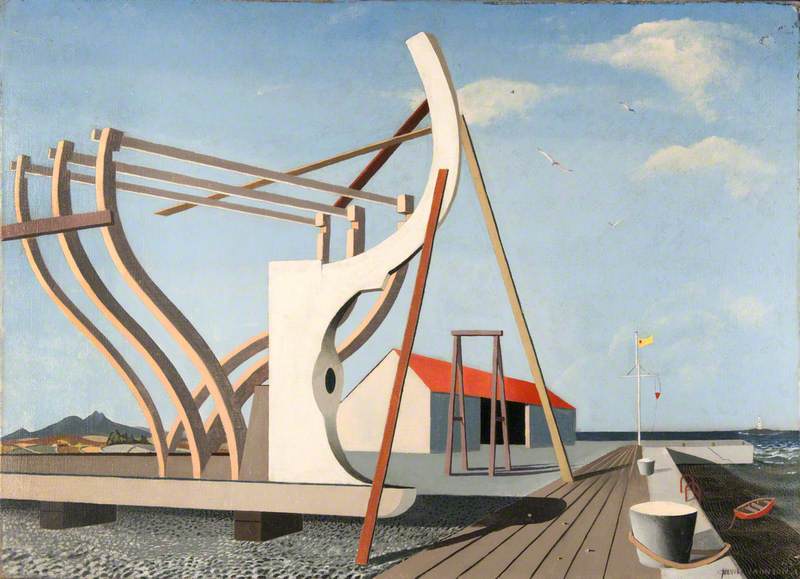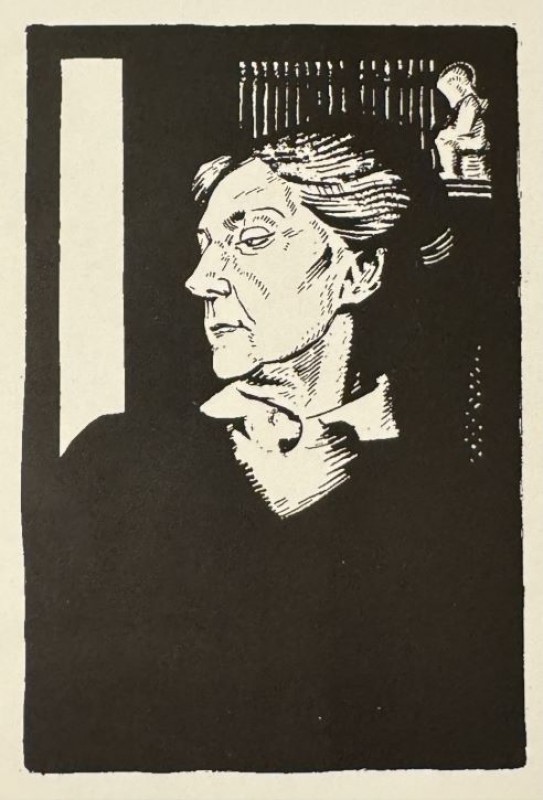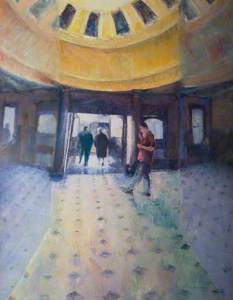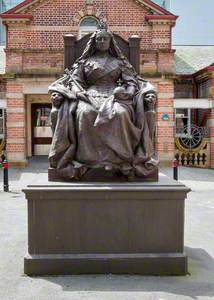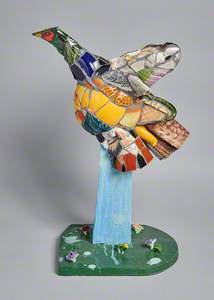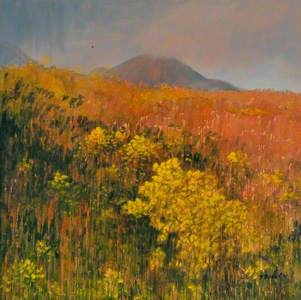Across the Belfast skyline sit several large hospital campuses, each with its own distinct history. In all, the Belfast Health and Social Care Trust is responsible for almost 300 buildings spread across every part of the city – many of them are iconic landmarks for Belfast's residents. The artworks in the Trust's collection – displayed inside its hospital buildings and around its grounds – reveal many fascinating stories about the ever-changing landscape of health and social care in the city and the significant role of artists in public health.
Distinct hospitals – distinctive collections
Belfast's medical institutions emerged independently in response to the diverse and changing needs of its residents over two centuries. In the early 1800s, the wealthy were able to access the best medical services by subscribing to the General Hospital on Frederick Street. Those without means might have needed to seek help from the Belfast Charitable Society, whose poor house on Clifton Street is still accessible today as a visitor centre and museum. Even less fortunate were the destitute, whose place of last resort was the Union Workhouse and its fever hospital off the Lisburn Road.
These independent facilities had to expand to cope with a population boom in the late nineteenth century as Belfast emerged as the most prosperous city in Ireland and a key industrial centre for the British Empire.
Dunville Park and Royal Victoria Hospital, Falls Road Belfast
William Alfred Green (1870–1958) 
Royal Victoria Hospital, Belfast: A Visit by the King and Queen to the Clarence Ward
1903
unknown artist 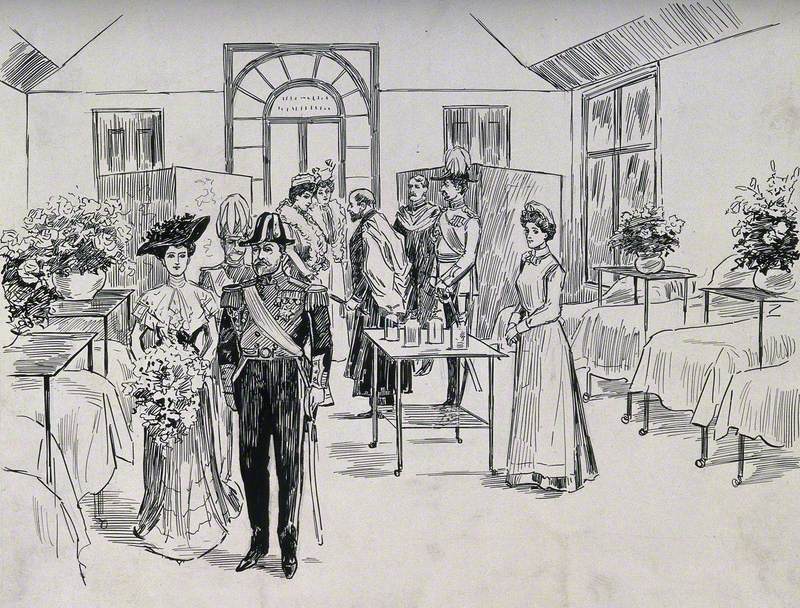
The Royal Victoria Hospital, which replaced the previous General Hospital, is the focus for much of the Belfast Trust art collection given its size, history and the range of facilities it hosts. Across its expansive campus in west Belfast, the Royal has substantial historical holdings. There are also many significant contemporary pieces on display including a major programme of integrated artworks which were installed for the new 'Phase One' facilities at the turn of the millennium. Important specialist regional services within the Royal complex, including the Royal Jubilee Maternity Service and the Royal Belfast Hospital for Sick Children, hold their own collections of material focused on their areas of work and their unique social histories.
Not far from the Royal, sandwiched between the lower Lisburn Road and the Donegall Road, sits Belfast City Hospital, an equally impressive but aesthetically contrasting facility. City Hospital embodies the monumental, monolithic ambitions of 1960s and 1970s public architecture; its imposing cubic tower swept away several older buildings. The Tower Gallery on the ground floor of the main building plays host to frequently changing exhibitions of art from Trust staff and patients. The Northern Ireland Cancer Centre, also on the City site, has developed an impressive collection of contemporary artwork.
In north Belfast, the Mater Infirmorum Hospital has its roots in the Order of the Sisters of Mercy, renowned internationally for their care of wounded soldiers alongside Florence Nightingale during the Crimean War. Like the Royal, the Mater holds a compelling mix of historical paintings and sculptures alongside contemporary works.
Elsewhere in the city, facilities such as Musgrave Park Hospital and Knockbracken Healthcare Park emphasise green open space around care facilities. Newer phenomena are the Wellbeing and Treatment Centres located in busy urban and suburban areas which allow essential treatment to be delivered without overburdening the main hospital sites. Most of these have smaller but no less significant collections; funding from the Arts Council of Northern Ireland allowed many of the newer centres to appoint Arts Coordinators to commission new pieces and create participatory artworks with local communities.
Art and care in the heyday of industrial Belfast
The fine art collection at the Royal tells a story of a burgeoning Victorian city: the great and the good of the medical professions and wider Belfast society – captains of industry, mayors, professors – gaze imposingly from grand oil paintings, busts and statues. The name of the hospital itself, and buildings within the complex such as the King Edward Building, bear witness to its royal patronage and the proud unionism of the city's leadership.
Viscount Pirrie (1847–1924)
1891
Hubert von Herkomer (1849–1914) 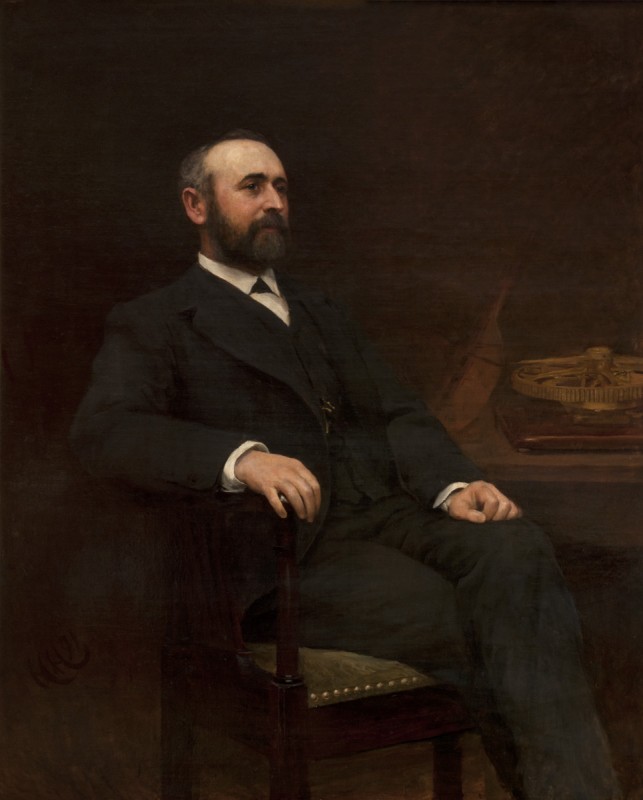
Monuments and remembrances abound in the King Edward Building and the Victorian Corridor, off which were arranged wards leading out to verandas overlooking lush landscapes: an innovative hospital layout for its era. This intuitive use of green space for recovery and health improvement was arguably ahead of its time; more recently, landscaping, often with a participatory focus, has regained an important role in hospital design.
Stained glass windows, plaques and portraits adorn the walls in this older part of the Royal. Wards – and even individual beds – once bore the names of wealthy patrons: a reminder of an era long before the NHS when donors' largesse was the lifeblood of a functioning hospital. The original entrance to the Royal through the old Black and White Hall has been replaced by a modern atrium on the other side of the main complex.
Diana Hadden's painting of the Hall is on display in the 'Phase One' building which opened in 2003, 100 years after the opening of the original Royal Victoria Hospital. This historic part of the site remains guarded over by the commanding seated figure of Queen Victoria herself (already two years deceased when the original hospital opened in 1903), sculpted by the London-based John Wenlock Rollins.
Queen Victoria (1819–1901)
c.1900
John Wenlock Rollins (1862–1940) 
The site of the Royal is bounded on its northern edge by the Falls Road, the heart of predominantly republican west Belfast, placing the hospital at the epicentre of a major Troubles-era flashpoint. The culture and ethos that produced Victorian icons in Belfast hospitals would undergo dramatic challenge and transformation in Belfast in the ensuing century: Victoria retains a commanding position on site even if, today, she is largely hidden away from public view. Meanwhile, more recent commissions and donations in the Royal offer environmental art that is much lighter, brighter and inclusive in tone.
Contemporary sculpture across the Trust
The veneration of royalty and other high-profile public figures, a common artistic theme in the Victorian and Edwardian eras, would over time give way to a much freer expression of forms and ideas in the sculpture commissioned and collected by the Trust.
Framed in a central niche at the end of the well-preserved 1930s entrance lobby of the Royal Jubilee Maternity Service is the Maitland Beath Memorial, also known as Mother and Child. This stone relief carving by Sophia Rosamond Praeger has, in the 92 years since its unveiling, become an icon of the maternity service and an image to which the staff have a strong attachment. Praeger, an artist whose work can be found in many UK public collections, expressed a fluidity and grace in her work that spoke to a burgeoning artistic freedom during that era.
Bird (from 'The Museum of the Old Lady who Swallowed a Fly')
1998
John Kindness (b.1951) 
Horse (from 'The Museum of the Old Lady who Swallowed a Fly')
1998
John Kindness (b.1951) 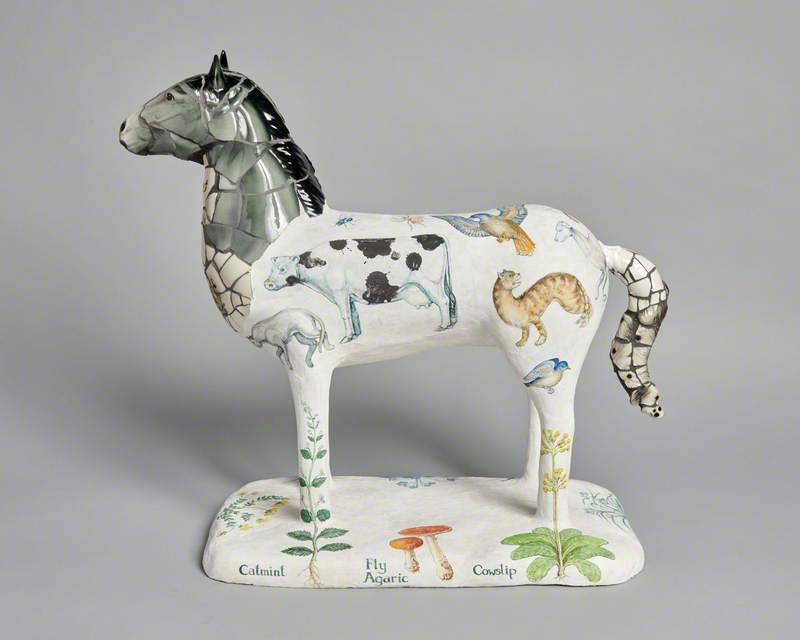
Nearby, in the airy atrium of the Children's Hospital, can be found a delightful set of sculptures by the Belfast-born sculptor John Kindness (sculptor of the Big Fish, located by the River Lagan). At child's eye view, horses, birds and bulls, collaged from fragments of older pieces of pottery and ceramics, reveal ever more layers of texture, colour and meaning the more one looks. Colour and light abound throughout the Children's Hospital: the atrium seating, designed by Margaret McGonagle, transforms the waiting experience into something full of colour and the potential for play.
Other pieces, such as Eamonn O'Doherty's Bicentenary Sculpture, produced to mark 200 years of the Royal Hospitals from 1797–1997, and Under the Mountain by Eilis O'Connell, located outside the Postgraduate Centre at Belfast City Hospital, explore form and expression in more open-ended ways.
Buoyed by a phase of major support for public art, sculptors in the early 2000s developed work that sought to enhance the hospital environment, creating thought-provoking and enjoyable spaces for patients, visitors and staff. Alongside major commissions, artists-in-residence became fixtures around wards, clinics and day centres; artist-facilitators from Arts Care, an independent arts organisation, began working with Trusts across Northern Ireland in the early 1990s and today continue to offer daily creative activities for patients and staff. Most of the non-commissioned art on display across Belfast Trust hospital sites emerged through participatory workshops led by our artists-in-residence.
Commissions and donations – art at the Northern Ireland Cancer Centre
The vibrant collection of works on display at the Northern Ireland Cancer Centre speaks to the power of art to connect and transform our experience even in the most challenging of circumstances. A wide variety of works were brought together by a voluntary committee to coincide with the launch of the centre in 2010. The generosity of donors is especially evident at the Cancer Centre, but many of the contemporary works on display in Belfast hospitals were only possible to obtain thanks to the kindness of collectors, former patients and family members.
Paintings on display at the Northern Ireland Cancer Centre include the panoramic triptych Belfast by Colin Davidson, which depicts a view from Belfast city centre looking north past City Hall and towards Cave Hill, Rita Duffy's atmospheric depiction of St John's Lighthouse in County Down, one of two depictions of St John's Lighthouse owned by the Belfast Trust (the other, by Donald Teskey, can be seen at the Royal) and the riotous Playground by Stephen Forbes, a hive of activity providing endless amusement.
Suspended in flight above the waiting area in the inner atrium of the Northern Ireland Cancer Centre is a flock of birds. This sculpture, On the Wing by Andrea Spencer and Scott Benefield, for which more than 200 pieces of handblown glass were fitted into a stainless steel matrix, was inspired by the murmurations of starlings often seen in the evening sky above Belfast.
The Northern Ireland Cancer Centre is designed to be welcoming and calming. In a similarly challenging caring context, consultation work by the Northern Ireland Hospice – as part of the redevelopment of their centre in north Belfast – revealed the complexity of commissioning environmental artworks for people experiencing serious illness. Stakeholders felt that art in these contexts should be calm but uplifting, and should seek to break the 'monotony' of environments that can often perceived as sterile. (One comment in the hospice's creative consultation noted: 'Relatives and visitors spend long amounts of time in the same areas and yearn for "something other than the hand sanitiser poster to read"'.)
The artworks around the Cancer Centre's bright and airy modern building offer diversion, playfulness and joy, as well as providing visual fields of quiet reflection to those who need it most – as seen, for example, in Martin Cooke's meditative painting Evening Light, with its serene, dusky glow.
Collecting into the future
Belfast Health and Social Care Trust has collected art over more than two centuries. The challenge facing the Trust today is how we can develop these collections and steward them for future generations against a backdrop of limited funding in both the arts and healthcare.
Our key current aim in the Trust is to catalogue and preserve important pieces, implementing best practice from the museums sector where appropriate – while recognising that our facilities are public hospitals, not public museums.
Secondly, we want to integrate our collections within our Arts in Health programme and our work with artists-in-residence, which inspires patients, service users and staff to develop their own creative energy. Ultimately, we aim to showcase the breadth and depth of our collections, putting these wonderful creative works to use as a means of enhancing our hospital environments and transforming the often difficult experiences people face in treatment and recovery.
Conor McCafferty, Arts and Heritage Collections Officer for Belfast Health and Social Care Trust
This story is supported by Crossland Tankers
